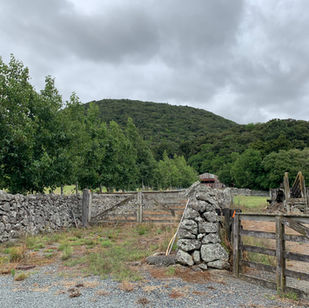
Rock Walls
The volcanic nature of the mountains that surround Maungatapere provided a crop of rocks that have been put to use by all those who settled in the area.
Early Māori used them in their gardens to help retain soil moisture and warmth, while Pākehā settlers wanted clear land for more European-style farming and created the stone walls that are such a feature of our district.
Farmers started utilising the rocks from the 1860s. During the post-WWI and Depression-era, Government schemes organised wall-builders to help farmers clear the land of volcanic stone and make way for agricultural and horticultural development.
The early walls were built by hand and have no ‘butt stones’ like those built later. Originally all the stones were gathered and transported by hand. Later, when horses or bullocks could transport the heavy stones into line, butt stones started appearing on the walls.

There are approximately 156 kilometres of stone walls across Whangārei, with many in the Maungatapere region.
Sadly, there was a time when the rock walls weren’t considered as special as they are now and many were bulldozed.
Thankfully today the walls are now protected under Whangārei District Council bylaws.



If you’d like to learn more about the walls, see Catherine Ballard’s book Stone Wall Country – The Dry Stone Walls of Whangarei District which you can purchase online, or find a copy in the library.

